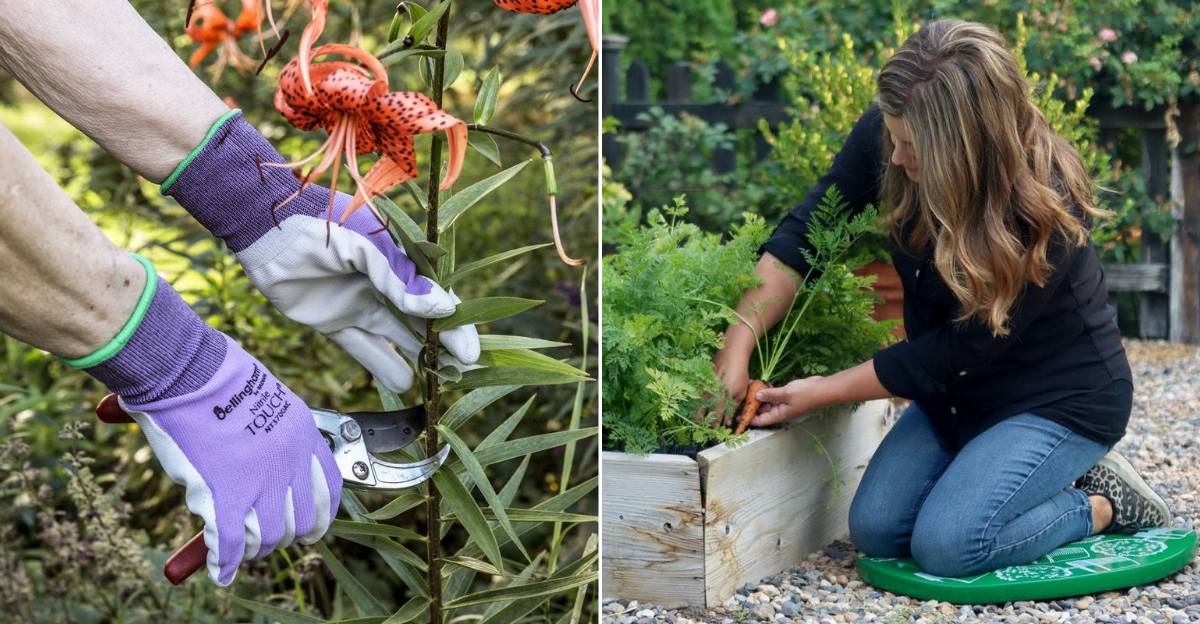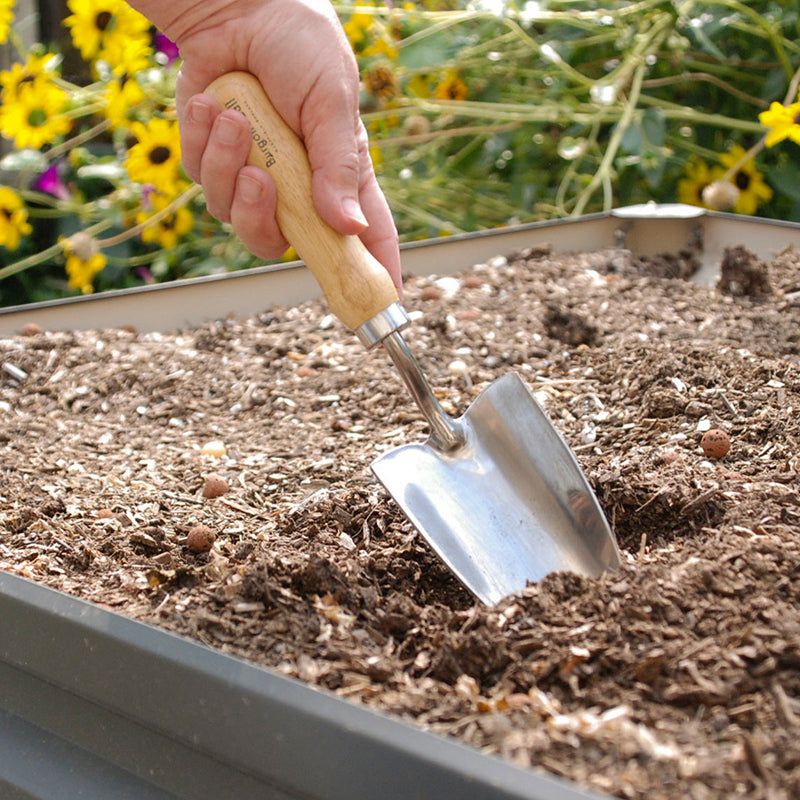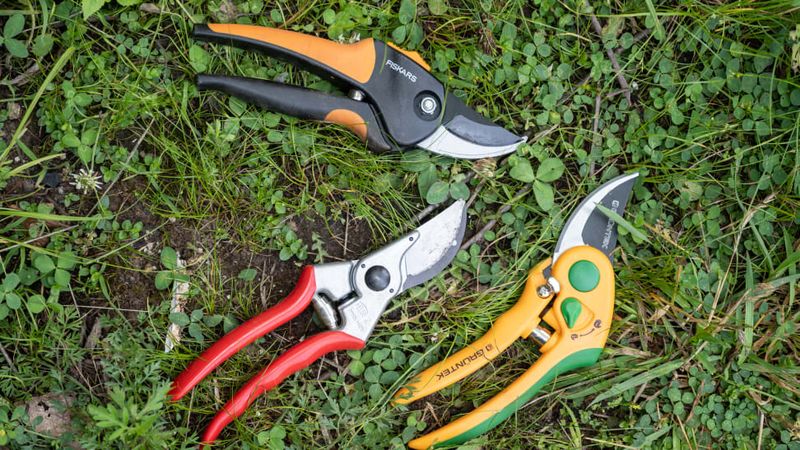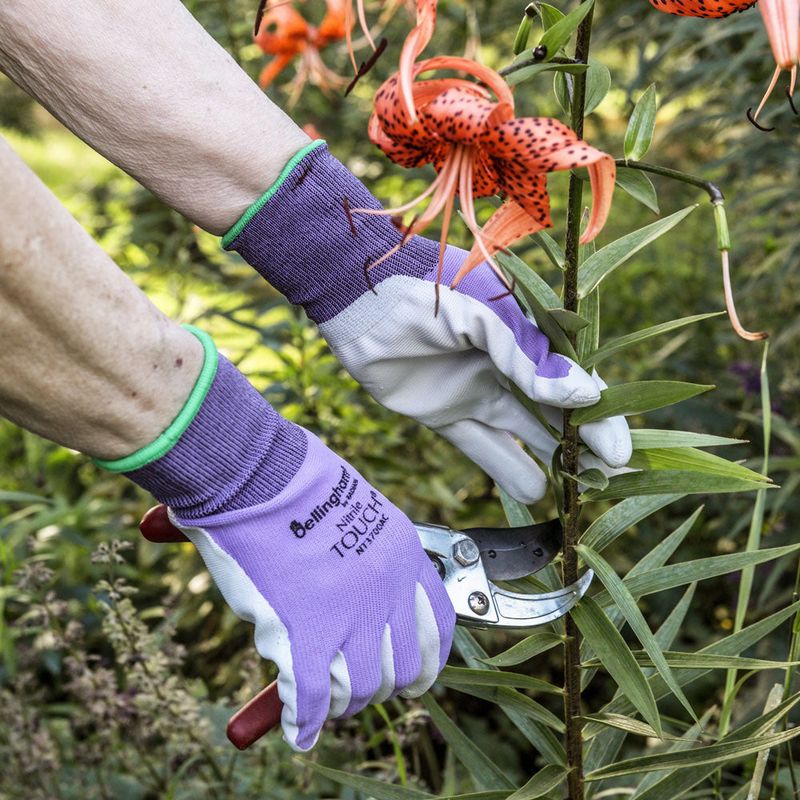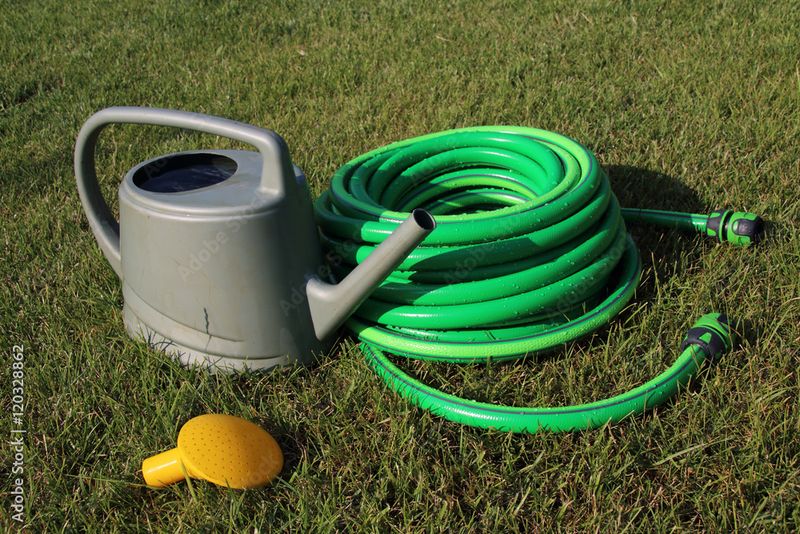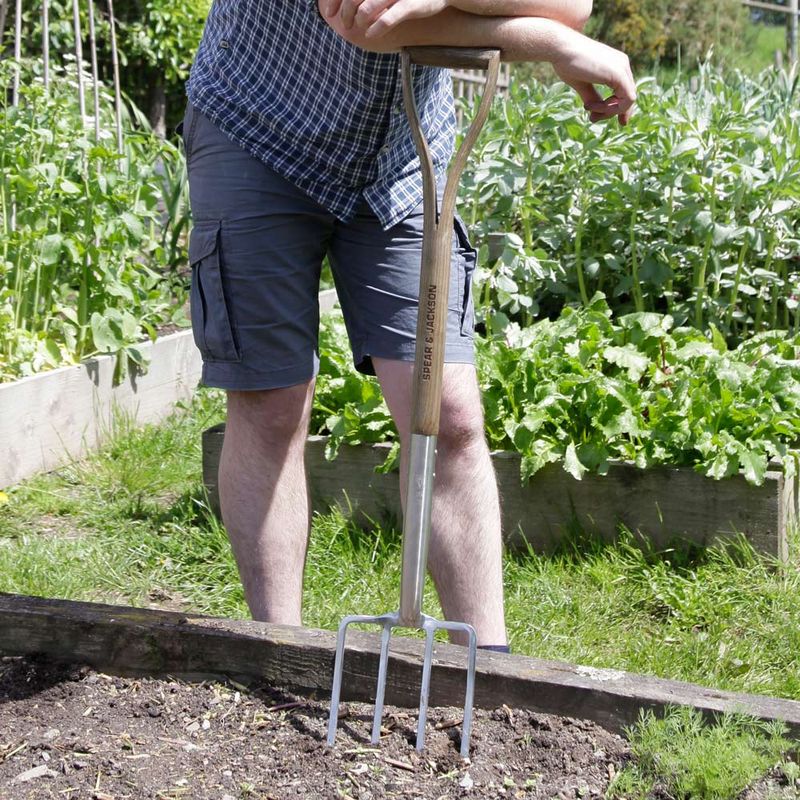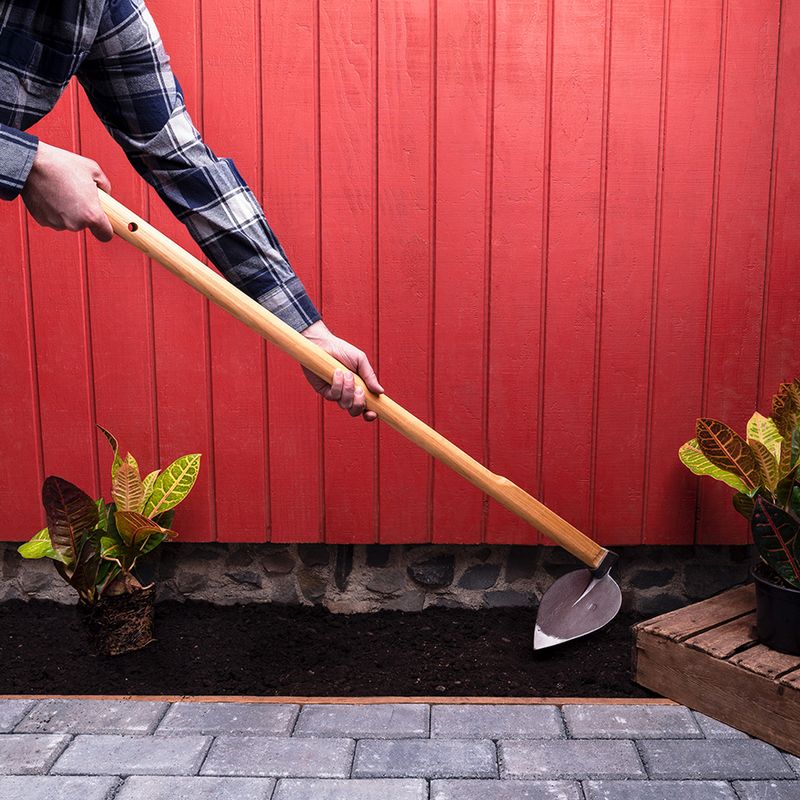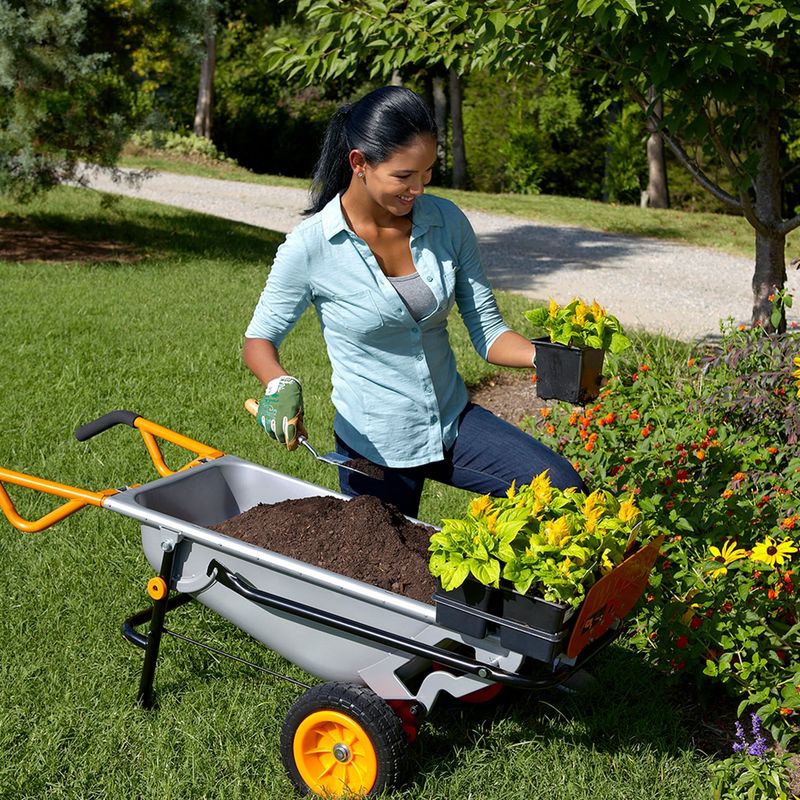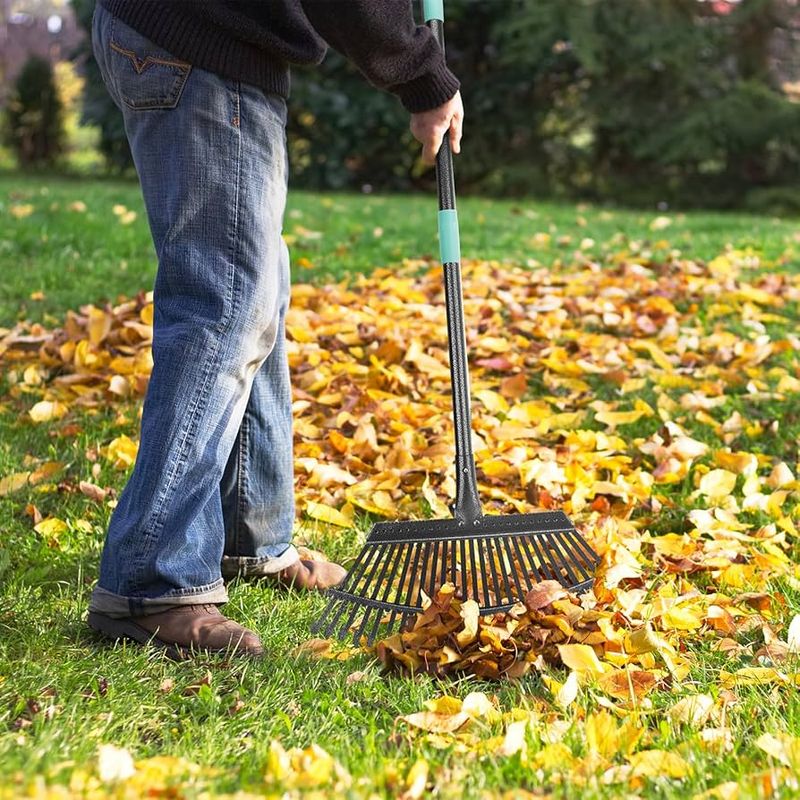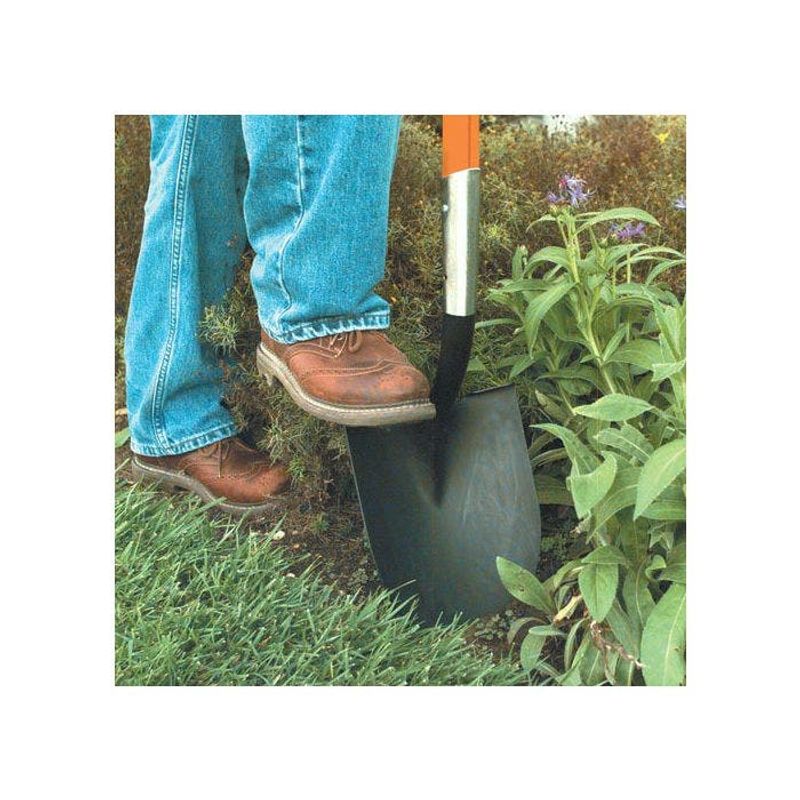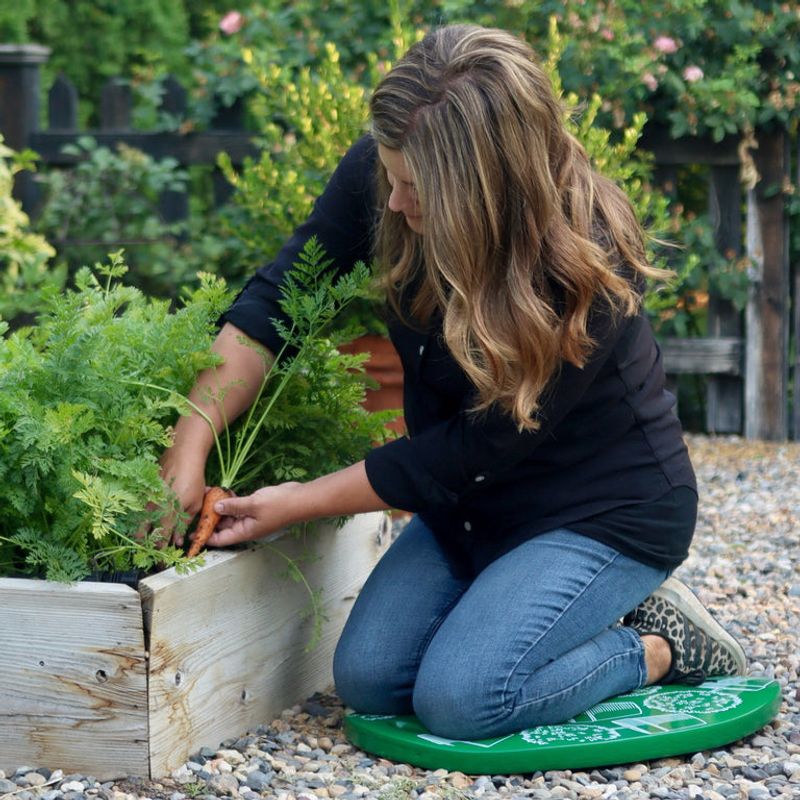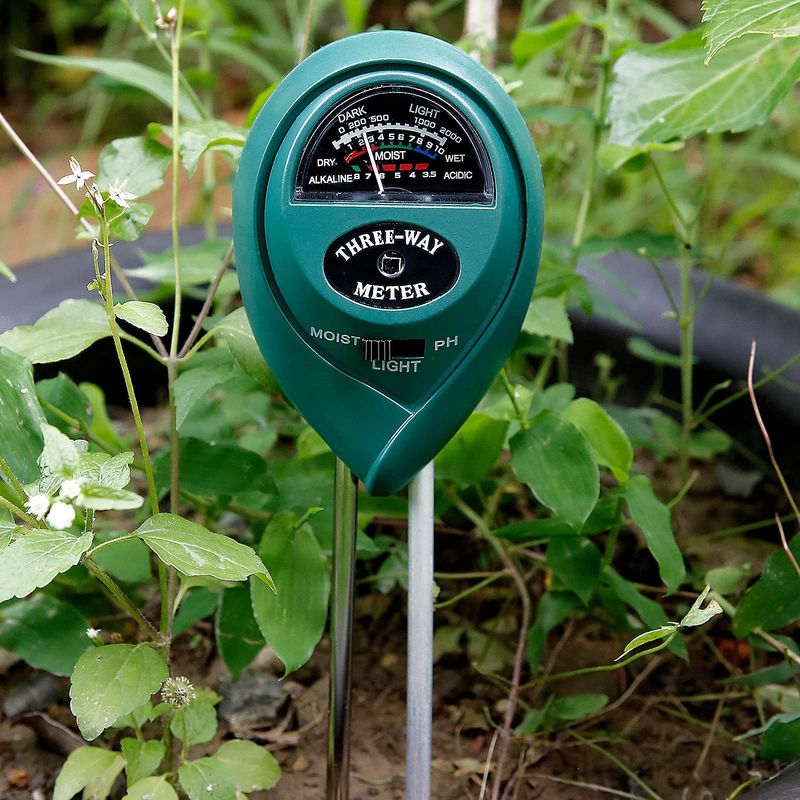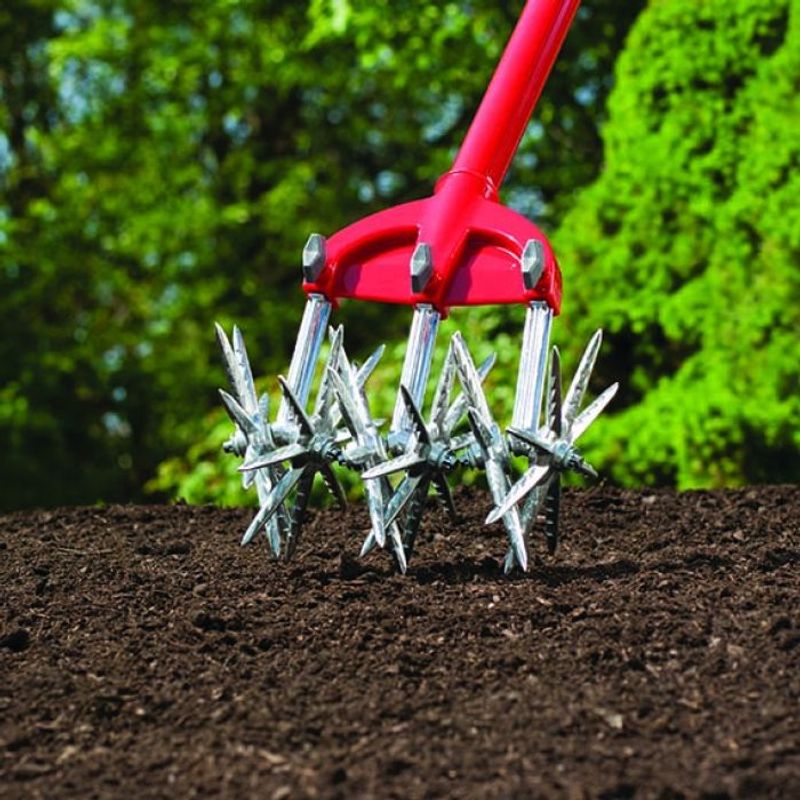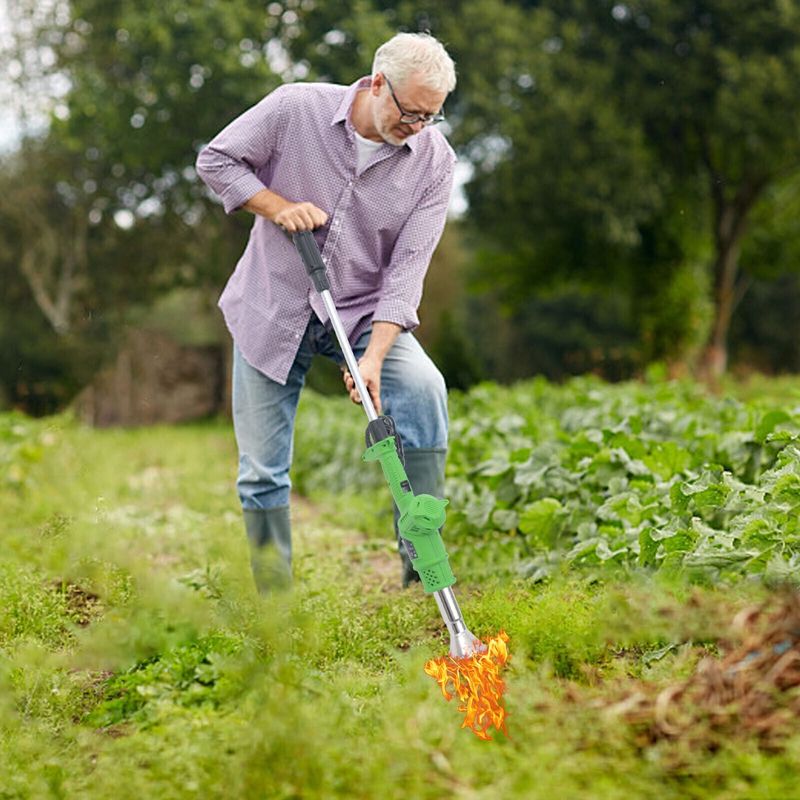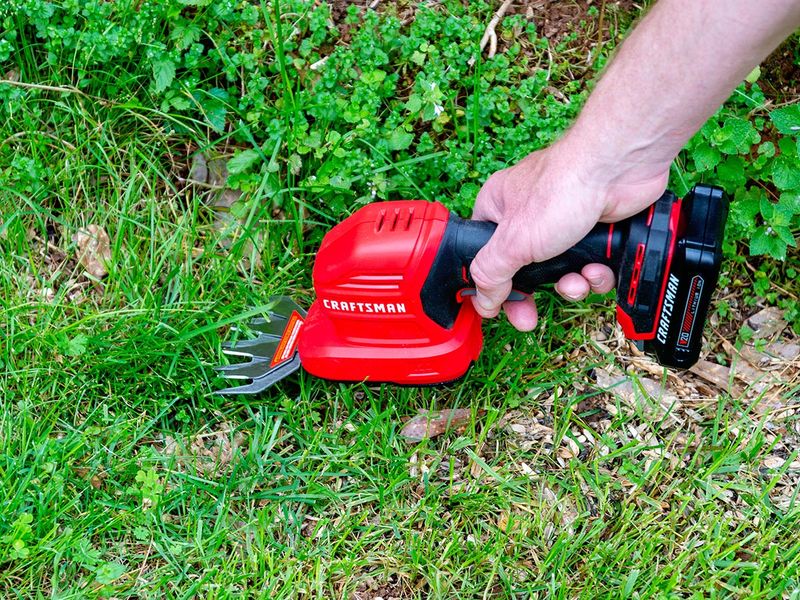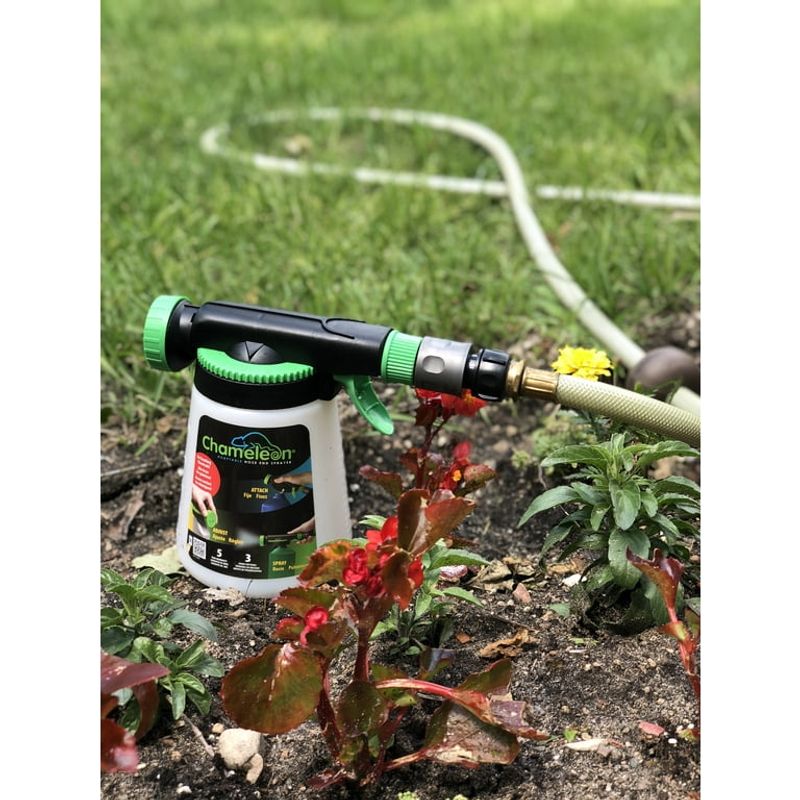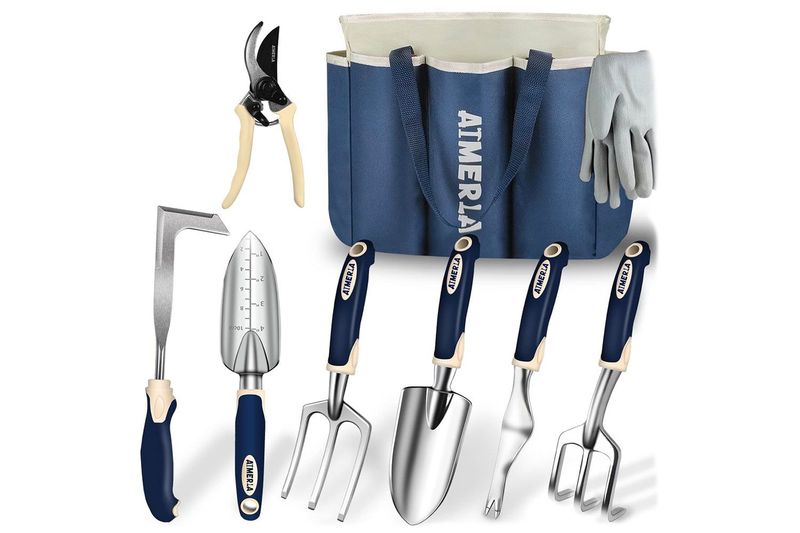Gardening is a joy, but only if you have the right tools at your disposal. In the quest for the perfect garden, some tools are indispensable, while others simply collect dust.
Here’s a detailed look at which ones you’ll find yourself reaching for repeatedly, and those you might reconsider investing in.
1. Hand Trowel
In the world of gardening, the hand trowel stands as a steadfast ally. Picture a tool that fits perfectly in your hand, its sturdy steel blade digging effortlessly into the earth.
This small wonder is perfect for planting bulbs, digging holes for seedlings, and even weeding in tight spaces where larger tools just can’t reach. With a well-designed handle, it offers comfort during prolonged use, making it a joy to wield.
Even in the rain, its grip remains firm, ensuring precision with every use. Truly, it’s the Swiss Army knife of garden tools.
2. Pruning Shears
Pruning shears are the unsung heroes of garden maintenance. Imagine snipping away with ease, maintaining the shape and health of your beloved plants. Their sharp blades are perfect for trimming back overgrown branches and deadheading flowers to encourage new growth.
With ergonomic handles, they fit snugly in your hand, reducing fatigue during extended sessions. Even the most stubborn stems yield under their bite, making every cut clean and satisfying.
Whether you’re an amateur gardener or a seasoned pro, these shears are an essential addition to your toolkit.
3. Garden Gloves
Garden gloves are more than just a protective barrier; they’re your hands’ best friends. Imagine plunging your hands into the soil, feeling the texture without the fear of cuts or dirt. With these gloves, you can tackle thorny bushes without a scratch.
They offer a snug fit, ensuring dexterity isn’t compromised. Made from breathable materials, they prevent your hands from sweating even during the hottest days.
Washing them is a breeze, making them ready for each adventure. Indeed, they transform hands into indomitable tools of gardening art.
4. Watering Can or Hose with Spray Nozzle
The watering can or hose with a spray nozzle is the heart of garden hydration. Imagine the gentle arc of water cascading over thirsty plants, each drop a lifeline. With a watering can, you have control, ensuring each plant gets just the right amount.
The hose, with its adjustable nozzle, offers flexibility to reach distant pots or to shower tender seedlings with care.
Both tools are essential, reducing water waste and preventing overwatering. They’re the silent workhorses of your garden, nurturing every leaf and bud.
5. Garden Fork
The garden fork is indispensable for any serious gardener. Imagine turning over rich compost, or effortlessly aerating your soil with this mighty tool. Its strong tines dig deep, breaking up clumps and mixing in essential nutrients.
Ideal for loosening soil around plants without causing damage, it’s a must-have for anyone with a vegetable patch.
While shovels are good for moving dirt, the fork’s specialty is in preparing the earth for planting. Durable and balanced, it’s built to withstand years of hard work, making it a garden staple.
6. Hoe
A hoe is a gardener’s best friend when it comes to weed control. Imagine gliding it across the soil, uprooting weeds with minimal effort. With its sharp blade, it can also shape planting beds and furrows.
Its long handle ensures you can work for hours without straining your back. The hoe is especially useful in vegetable gardens, where regular cultivation is needed.
Different designs cater to varied needs, from breaking new ground to maintaining well-tended plots. Its simplicity and efficiency make it indispensable for any gardener.
7. Wheelbarrow or Garden Cart
When it comes to hauling, the wheelbarrow or garden cart is unmatched. Picture moving heaps of soil, mulch, or compost with ease, saving your back from strain.
The wheelbarrow’s single wheel design is perfect for navigating narrow paths, while the garden cart offers stability with its two or more wheels. Both are essential for transporting heavy loads, ensuring you spend more time planting than carrying.
Their sturdy construction promises durability, and they become an extension of your garden routine. Truly, they’re workhorses worth their weight in gold.
8. Rake (Leaf or Bow)
Rakes are the unsung heroes of garden tidiness. Whether gathering leaves in the fall or smoothing out soil, they are essential tools. The leaf rake, lightweight and nimble, is perfect for collecting debris without disturbing the grass.
The bow rake, with its sturdy tines, excels in spreading mulch or leveling soil. Both types aim to keep your garden picture-perfect. Their presence in garden sheds worldwide is a testament to their versatility and importance.
With minimal effort, they transform chaos into order, one sweep at a time.
9. Long-Handled Shovel
A long-handled shovel is the backbone of any garden toolkit. Imagine digging deep holes for new trees or turning over earth for fresh planting beds. Its long handle offers leverage, making digging easier while protecting your back from undue stress.
Whether you’re edging a flower bed or transplanting delicate shrubs, its broad blade cuts through soil with precision.
Built to last, it withstands the rigors of heavy use. For any task that involves moving soil, it’s your reliable partner, helping shape the garden of your dreams.
10. Garden Kneeler or Pad
A garden kneeler or pad is a boon for anyone who spends hours tending to plants. Imagine kneeling in comfort as you weed or plant without straining your knees. These pads provide cushioning, transforming hard ground into a soft surface.
Some models even double as seats, perfect for taking a well-deserved break. Portable and lightweight, they move with you around the garden, ensuring comfort is always at hand.
They’re a simple solution to a common problem, making gardening less of a chore and more of a pleasure.
1. Bulb Planter
The bulb planter often sits unused, despite its intended convenience. This tool promises precision planting, but many find a standard trowel does the job just as well. Designed to dig perfect holes for bulbs, its spring-loaded mechanism can be cumbersome and unnecessary.
For casual gardeners, its specialized purpose offers little appeal. The trowel, in its simplicity, provides more flexibility, making the bulb planter redundant in many gardens.
It remains a niche tool, appreciated by some, but not essential for most. Quite often, it just takes up space.
2. Soil Moisture Meter
Soil moisture meters, while intriguing, often end up in the forgotten tool pile. These meters promise accuracy in gauging soil moisture but frequently fall short. A gardener’s finger, with its sensitive touch, often proves more reliable.
The allure of technology fades when results are inconsistent. For many, understanding plant water needs comes from observation, not gadgets.
The moisture meter, though novel, is outclassed by simpler methods. In the world of gardening, where intuition reigns, this tool often collects dust rather than accolades.
3. Garden Weasel (Soil Cultivator Tool)
The garden weasel, with its rotating tines, promises to cultivate and aerate with ease. However, its niche application often renders it redundant. In well-tended gardens, the weasel’s function overlaps with that of hoes and forks.
For small plots, its efficiency is questionable, and it struggles with compacted soil. Its design is intriguing but unnecessary when other tools suffice. Many find that traditional methods achieve the same results without added expense.
Hence, the garden weasel frequently ends up shelved, more novelty than necessity in gardening arsenals.
4. Electric Weed Burners
Electric weed burners sound like a gardener’s dream, but they often fall short. These devices promise to eradicate weeds with heat but tend to be slow and inefficient. For small gardens, they’re overkill, offering little advantage over traditional weeding methods.
Additionally, the time and electricity spent often outweigh the benefits. Their bulky design can be cumbersome, making them more of a hassle than a help.
For most, pulling weeds by hand or using a hoe is quicker and more effective. Thus, electric weed burners are often unnecessary additions to the tool shed.
5. Handheld Grass Shears
Handheld grass shears offer precision trimming but at the cost of time and effort. While perfect for detail work, they’re easily replaced by string trimmers for larger areas.
The shears’ manual operation becomes tedious quickly, and their sharp blades require frequent maintenance. For small tasks, they’re charming, but their practicality diminishes with scale.
In gardens where efficiency is key, they often play second fiddle to more versatile tools. While a quaint addition to any garden shed, they’re more nostalgic than necessary, often sidelined for quicker alternatives.
6. Hose-End Sprayers
Hose-end sprayers promise convenience but frequently disappoint. Designed to deliver fertilizers or pesticides evenly, they often clog or leak. The uneven coverage they offer can be frustrating, leading to patchy results.
Many gardeners prefer manual mixing for precision and reliability. While the idea of attachment ease is appealing, the reality often falls short. For those who prioritize control and consistency, traditional methods trump these gadgets.
The sprayer might find use occasionally, but more often than not, it’s left hanging, a tool of unfulfilled promises.
7. Fancy Tool Sets in Decorative Boxes
Fancy tool sets, beautifully presented in decorative boxes, often end up as shelf decorations. Their allure is in their appearance, not their utility. Many are cheaply made, sacrificing durability for aesthetics.
While they make charming gifts, their practicality in the garden is limited. Tools with real utility demand sturdiness and ergonomic design, often absent in these sets. Though visually appealing, they’re best suited for display rather than dirt.
For serious gardeners, investing in individual, quality tools is a wiser choice. Decorative sets often remain pristine, untouched by soil.
